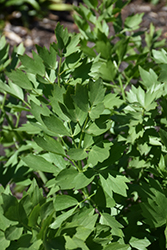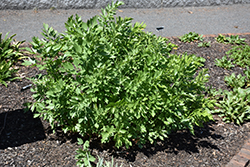


| Phone: |
| 613-599-3419 |
| Email: |
| info@makeitgreen.ca | Location: |
| 5200 Flewellyn Rd. Stittsville, Ontario
Need Directions? Click for map |
Welcome to our plant search tool. This database contains many of the thousands of plants that we carry. There are some notable exceptions. Hundreds of new perennials come out every year and Make It Green has been a leader in making them available to you. Eventually the recent introductions will make it to our plant search tool but every year there will be a lag between our in-store plant selection and this search tool. Unfortunately this search tool can't cover everything that we will carry this year. We also carry over 100 varieties of rare and unusual evergreens and over 100 varieties of hard-to-find shrubs many of which are not in the plant search. Click on the Plant List button for a list of nearly all the woody plants (trees, shrubs and evergreens) that we have ordered or already have in stock for this coming year.
Height: 6 feet
Spacing: 24 inches
Sunlight:
![]()
![]()
Hardiness Zone: 4a
Description:
A culinary herb grown for the celery-like flavor of its leaves, stems, roots, and seeds; umbels of tiny chartreuse flowers in spring are showy; stems can be blanched and used as a vegetable; self seeds, and has naturalized in many areas
Edible Qualities
Lovage is a perennial herb that is typically grown for its edible qualities, although it does have ornamental merits as well. The entire above-ground parts of the plant are edible, and are usually harvested from late spring to mid fall. The edible parts have a sweet taste and a crisp texture.
The plant is most often used in the following ways:
- Fresh Eating
- Eating When Cooked/Prepared
- Cooking
- Drying
- Seasoning
- Tea
Features & Attributes
Lovage features showy corymbs of chartreuse flowers held atop the stems in mid spring. Its fragrant lobed compound leaves remain green in colour throughout the season.
This is a dense herbaceous perennial herb with an upright spreading habit of growth. Its medium texture blends into the garden, but can always be balanced by a couple of finer or coarser plants for an effective composition. This is a relatively low maintenance plant, and should be cut back in late fall in preparation for winter. It is a good choice for attracting bees and butterflies to your yard, but is not particularly attractive to deer who tend to leave it alone in favor of tastier treats. Gardeners should be aware of the following characteristic(s) that may warrant special consideration;
- Self-Seeding
Aside from its primary use as an edible, Lovage is sutiable for the following landscape applications;
- General Garden Use
- Naturalizing And Woodland Gardens
- Herb Gardens
- Container Planting
Planting & Growing
Lovage will grow to be about 6 feet tall at maturity, with a spread of 3 feet. When grown in masses or used as a bedding plant, individual plants should be spaced approximately 24 inches apart. It grows at a slow rate, and under ideal conditions can be expected to live for approximately 3 years. As an herbaceous perennial, this plant will usually die back to the crown each winter, and will regrow from the base each spring. Be careful not to disturb the crown in late winter when it may not be readily seen!
This plant can be integrated into a landscape or flower garden by creative gardeners, but is usually grown in a designated herb garden. It does best in full sun to partial shade. It prefers to grow in average to moist conditions, and shouldn't be allowed to dry out. It is not particular as to soil type or pH. It is quite intolerant of urban pollution, therefore inner city or urban streetside plantings are best avoided. This species is not originally from North America..
Lovage is a good choice for the edible garden, but it is also well-suited for use in outdoor pots and containers. With its upright habit of growth, it is best suited for use as a 'thriller' in the 'spiller-thriller-filler' container combination; plant it near the center of the pot, surrounded by smaller plants and those that spill over the edges. It is even sizeable enough that it can be grown alone in a suitable container. Note that when growing plants in outdoor containers and baskets, they may require more frequent waterings than they would in the yard or garden. Be aware that in our climate, most plants cannot be expected to survive the winter if left in containers outdoors, and this plant is no exception. Contact our experts for more information on how to protect it over the winter months.



